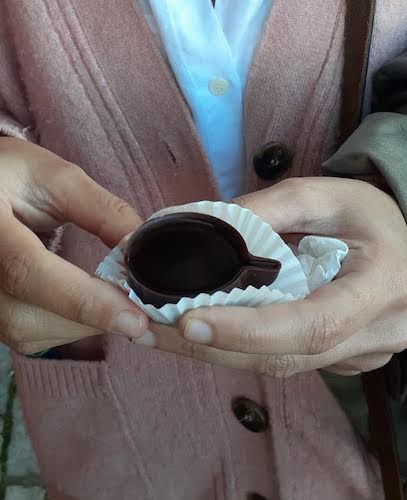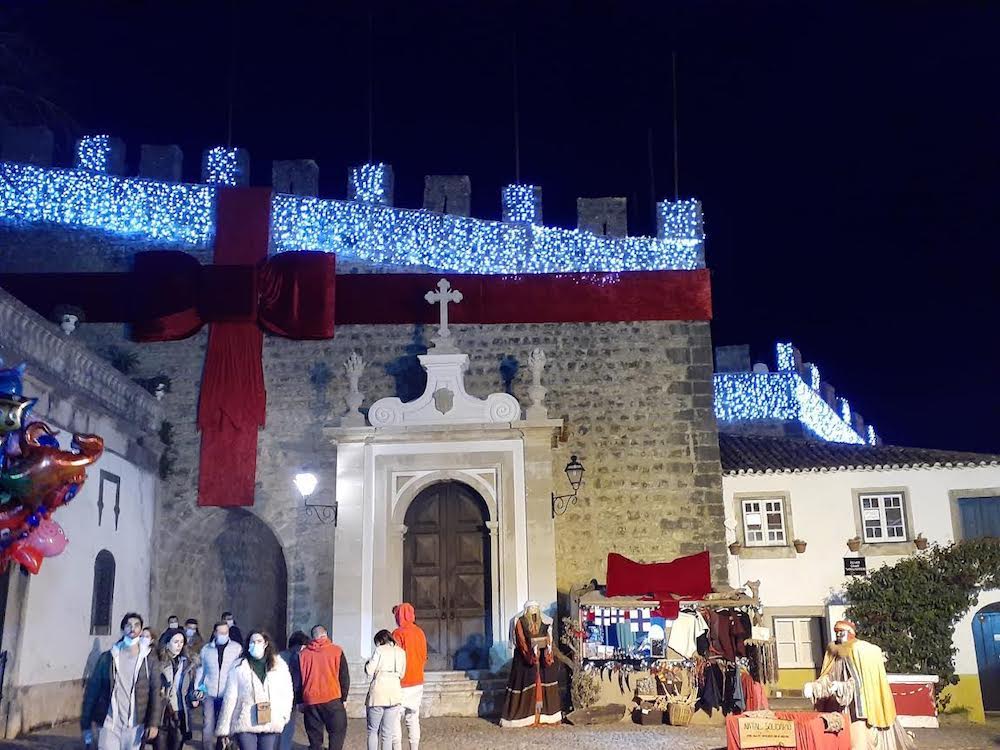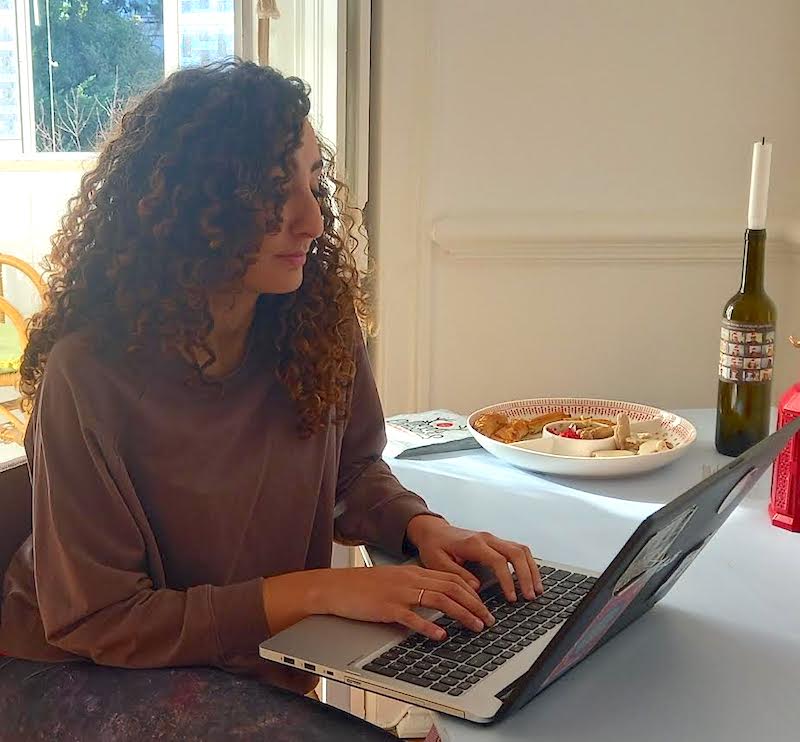From the beginning of December to 2 January, the beautiful medieval town Óbidos becomes covered in Christmas lights. The Christmas spirit is everywhere – even the ancient city walls are gift wrapped! The medieval architecture, the narrow streets and the overall vibe of the town preserves its medieval feel which adds to its “Christmasy” allure.

This is Portugal’s most popular Christmas village. Yet it is also one of the lesser-known Christmas markets among expats. I would say there was one non-Portuguese person in every crowd of 50 or 70 people.
In Óbidos, you get two-in-one: the village itself, which turns into a big Christmas market, and the Vila Natal, which takes place inside the castle and is more of a fun fair. This mix makes Óbidos a perfect Christmas day trip for couples, families, kids and friends. Adults can enjoy the typical Portuguese drink ginjinha (a sour cherry liqueur) which originally comes from Óbidos. The ginjinha you get in Óbidos is, for some reason, nicer than the ones you would try in Lisbon. Moreover, you will get some ginjinha varieties such as chocolate flavored ginjinha- which makes an amazing dessert.
The famous liqueur is typically drunk in small cups made of chocolate which you can eat afterwards (maybe switch to a regular cup after a couple of ginjinha shots as that much sugar and the alcohol might not be the best idea – I can confirm that).
There is also the freshly baked Pão com chouriço (sausage bread) for which the village is also famous. Needless to mention shopping for handmade, locally produced Christmas gifts such as ceramic objects, jewelry, and of course pretty looking ginjinha bottles.
For the kid in us all
If you will be accompanying children (or if you are a little bit of a child deep inside like my friend and me), then definitely get tickets for the Vila Natal. We bought the tickets online, which was the best decision ever as the queue was incredibly long.
The Vila Natal is where all the magic begins within the walls of Óbidos’ castle. You can ice-skate on a sunny Portuguese day (it was 18 degrees when we went. The ice was not melting, which was a nice surprise as we would not have liked to take that risk. There was also an ice slide, which was a bit funny to see in the midst of all the sunshine and people in light T-shirts.
My favorite bit was the magician’s show, but the 6-year-old kids got all the attention which meant that my
friend and I were never picked by the magician for any of his tricks despite raising our hands and screaming “Eu…Eu” louder than the other kids (“I” in Portuguese).
There were elves (or more accurately, people dressed as elves) and a Santa Claus in a visor mask. He and his giant bottle of 70 percent alcohol gel received kids and their parents in his cute little house. We wanted to queue for the visor Santa Claus but then got distracted with another ginjinha cart – which we also enjoyed hanging around as we did not feel the need to compete with any toddlers there.
Anyway, I think it is all for Santa Claus’s own good as we would have asked for “inner peace” or “financial security” or “Hugh Jackman” instead of PlayStations and pets.

A much-needed break from the real world
We rightfully expected to enjoy every bit of the Vila Natal, but we had doubts about the food. Surprisingly, it was pretty good. We had the typical Portuguese cod fish with cream (bacalhau com natas) as well as breaded and fried chicken. Both were tasty, and we paid 7 euros each for that with a side of fries.
At night, the lights in both the village of Óbidos and in the Vila Natal were out of this world. The smell of freshly baked Christmas pastries, roasted chestnuts and the sounds of the happy kids and families in the background felt like a much needed break from work stress, rush hours, money problems and viruses.
It is also conveniently close to Lisbon. It was a little more than an hour’s drive before we started seeing the Ferris wheel and the big red bow decorating the walls of the town. It was more than worth it and, again, much needed.

Read more about Europe’s Christmas markets in Dispatches’ archives here.
About the author:
Sarah Nagaty is a PhD researcher of cultural studies in Lisbon. She’s lived in Portugal for three years.
As a student of cultural studies, Sarah is drawn to what connects people from different backgrounds to new cultures and places, how they relate to their new surroundings and what kinds of activities they could engage with in their new hometowns.
See all of Sarah’s Dispatches posts here.
See Dispatches’ Lisbon story archive here.
Sarah Nagaty has a PhD in cultural studies, She’s lived in Portugal for six years.
As a student of cultural studies, Sarah is drawn to what connects people from different backgrounds to new cultures and places, how they relate to their new surroundings and what kind of activities they could engage with in their new hometowns.















